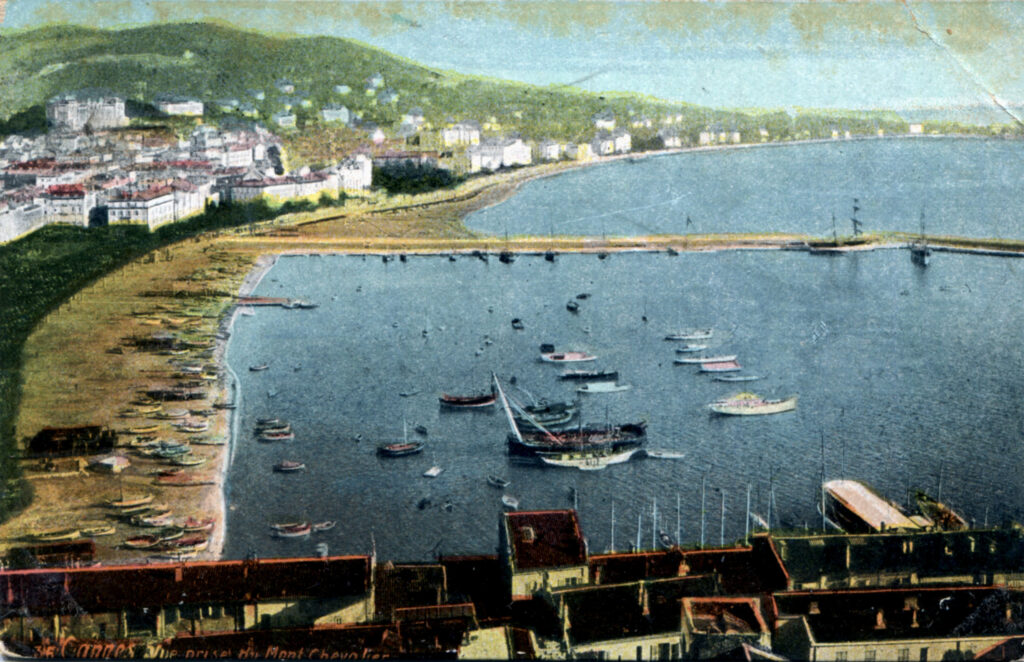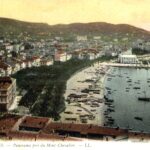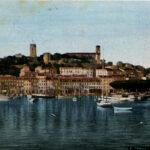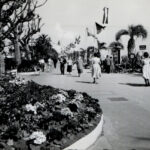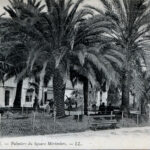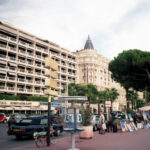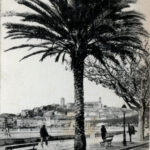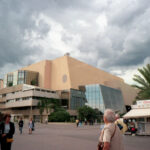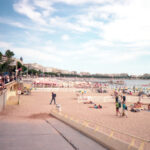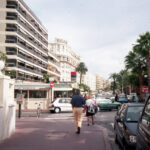Quick Cannes Travel Guide: what can you see in one day trip during an independent or private guided tour from Nice to Cannes and its surroundings, the museums, the old towns, the resorts with the famous beaches. Prepared by the “Union of Taxi Drivers” based on own experience and the feedback over the past 100 years.
Cannes or Cannes la Boca (ox. Canas) is a city in the south of France with a population of 70 thousand inhabitants, the Maritime mountains of the Alps. It sounds like the city of Caen in Normandy, where during the Second World War on D-Day there was an Allied landing, not to be confused, different spellings. It is one of the most popular and famous beach resorts on the Cote d’Azur with festivals and holidays.
Cannes – the history of the city, very briefly. The city was founded by the Romans in 42 BC. e. on the coast of Napoule Bay, near the Esterel mountain range. According to another version, the city was founded by the Ligures. It remained a small fishing village in Provence and was little known until the 19th century. In 1834, the former English Chancellor Lord Henry Peter Broom stopped in Cannes, who was heading to Italy, and was forced to interrupt his journey due to a cholera epidemic. Lord Broom was so fascinated by the beauty of the then fishing town, its sky, mild climate, that he decided to build a house in Cannes. Many English aristocrats followed suit. Cannes was soon discovered by Russians from high society. In 1879, Empress Maria Alexandrovna, the wife of Alexander II, visited the city, accompanied by her sons Sergei and Pavel. In 1888, Guy de Maupassant wrote of Cannes: “Princes, princes, princes everywhere.” The city stretches for 9 km from the Bocca quarter to the Fourcade cliffs.
- Côte d’Azur and Cannes at the beginning of the 20th century
- 2. view from the pier
- 3. Croisette Promenade
- Palm trees on Sailors Square
Cannes Travel Guide, the main attractions
Center of Cannes – Rue d’Antibes, Liberty Avenue and the Croisette
– Promenade de la Croisette
The most famous and popular place for the walking, the center of the social life of Cannes. The Croisette owes its name to an ancient cross that rises on the edge of the cape separating the road of Cannes from the road of Golfe-Juan.
A beautiful street with tall palm trees planted here in 1871, with flowering squares and parks, stretches for 3 km along the seashore – from the prestigious Palm Beach casino to the Palace of Festivals. The boulevard is framed by the architectural gems of the Belle Epoque: the Carlton, Majestic, Martinez hotels, luxury boutiques belonging to world-famous haute couture houses..
- Hotel Carlton on the embankment, n5
- Pedestrians on the promenade
– Le Suquet quarter
This is the oldest part of Cannes. The old city, built on the site of a former Roman village on the slopes of Mount Chevalier (Mont Chevalier), consists of only seven to eight narrow streets. From the top of the mountain there is an extensive panorama of the city, La Napoule Bay, the Leren Islands, the Esterel Range. Here are preserved built in the XII century. the castle, the church of St. Anne and a rectangular tower 22 meters high, which served as an observation post, were built by Leren monks. Since 1952, the collections of the Musée de la Castre and the exhibition hall have been located here. Another attraction of Le Suquet is the Church of Our Lady of Hope (Notre-Dame d’Esperance), built in the 16th-17th centuries in the Provencal Gothic style.
– Palace of Festivals and Congresses (Nouveau Palais des Festivals et des Congrès)
A modern complex of glass and concrete with a total area of 6,000 sq.m, built in 1982. It owes its worldwide fame to the fact that it is here that the International Cannes Film Festival is held annually in May. A small platform in front of the palace and a staircase, rather plain in their everyday form, are decorated with carpets and flowers during the days of the festival and become a podium of brilliance, beauty and glory. Thousands of tourists and locals flock here. Film stars, who received the main awards of the festival, leave their handprints on the stone slabs of the “Avenue of Stars” in front of the palace.
In addition to the film festival, a large number of international meetings and congresses are held here. The Palace has a conference hall for 2,500 seats, an auditorium for 1,000 seats, the Ambassador’s Salon for 3,000 m, and 17 exhibition halls.
- Palace of Festivals in May 1999, n 8
- Cannes beaches and weather in May 1999, n9
- Car and walking tours in 1999, Leo G photo N10
– Port Saint-Pierre
At the jetty Albert-Edouard (Jetee Albert-Edouard) the most luxurious yachts are moored. Pleasure boats depart from this pier to the Leren Islands.
– Rue Meynadier
Pedestrian shopping area, charming with its Mediterranean flavor. It is lined with inexpensive ready-to-wear boutiques, souvenir shops and the best grocery stores in Cannes.
– Rue d’Antibes
The most chic street in Cannes. There are luxury boutiques with shoes, furs, jewelry, perfumes, decor items.
– Forville Market
The market is open every day except Sunday. Here you can buy the freshest products. Greens, vegetables and fruits of local production are imported early in the morning by direct producers; overseas fruits come from Martinique (melons and pineapples), Spain (grapes and pears), Morocco (oranges). In fish rows on ice blocks, various varieties of fish, mollusks and arthropods are laid out. The meat stalls are no less picturesque.
– Alleys of Liberty (Allées de la Liberté)
One of the favorite places for walks of residents and guests of the city. There is a magnificent flower market here, where on Saturdays they also sell old and antique things. On one of the alleys there is a monument to Lord Brougham, to whom Cannes owes its transformation into a popular international resort.
– Villa Kazbek
This large villa, now divided into apartments, belonged to the Russian Grand Duke Mikhail Romanov, grandson of Nicholas I. Here he and his wife Sophia, Pushkin’s granddaughter, lived intermittently for more than 30 years. Grand Duke Mikhail died at Villa Kazbek on April 26, 1929. In memory of him, a memorial plaque was installed on the facade of the villa.
– Square Prosper Mérimée
Here in the house number 5 lived a great writer. A close friend of Napoleon III and Empress Eugenie, having learned on September 5, 1870 about the captivity of the emperor and the proclamation of the republic, he fell ill of a heart attack and died a few days later.
– Grand Jas Cemetery
Many prominent people are buried in the city cemetery of Cannes, including: the famous jeweler Carl Faberge and his wife; Russian ballerina Olga Khokhlova – the first wife of Pablo Picasso; one of the first Russian aviators Nikolai Popov.
In the center of the old city rises the Suquet hill – the old Castrum Canois, whose streets and houses are crowded along the slopes of Mount Chevalier. The Suquet tower, 22 m high, is the brightest historical monument of the old city. And outside the fortress walls of the Suquet is the Church of Our Lady of Hope (Notre-Dame de l’Esperance). From the famous cinema, where the Cannes Film Festival is held, a sightseeing tram departs regularly. The text of the tour is broadcast through headphones in different languages, including English.
– Fortress and chapel of St. Anna of the XII century
– Fort Royale (Isle Sainte-Marguerite) and its prisoner in “the iron mask”
There are yachts in the port. Regattas are constantly held here.
The sights also include the nearby Lérins Islands.
There are several railway stations in Cannes: Cannes, Cannes-La Bocca, Le Bosque, La Freyère.
Cannes – what else to see, attractions:
Museum de la Castre. It houses a collection of Mediterranean antiquities.
Museum of the Sea (Musée de la Mer) – a collection of shipwreck artifacts
Galerie de la Malmaison and Musée Chapelle Bellini – for contemporary art lovers
Cathedrals, churches, synagogues:
– Catholic Church of Our Lady of Hope (Notre-Dame de l’Esperance) (mid-7th century);
– Catholic Church of Our Lady of the Road (Notre-Dame de Bon Voyage);
– the Catholic Lerins Abbey, located on the island of Saint Honorat off the coast of Cannes (as well as the famous monastic distillery “Lerina”;
– Russian Church (Michael-Arkhangelsk Church) (1894) – the only Orthodox church in Cannes
To be continued..

